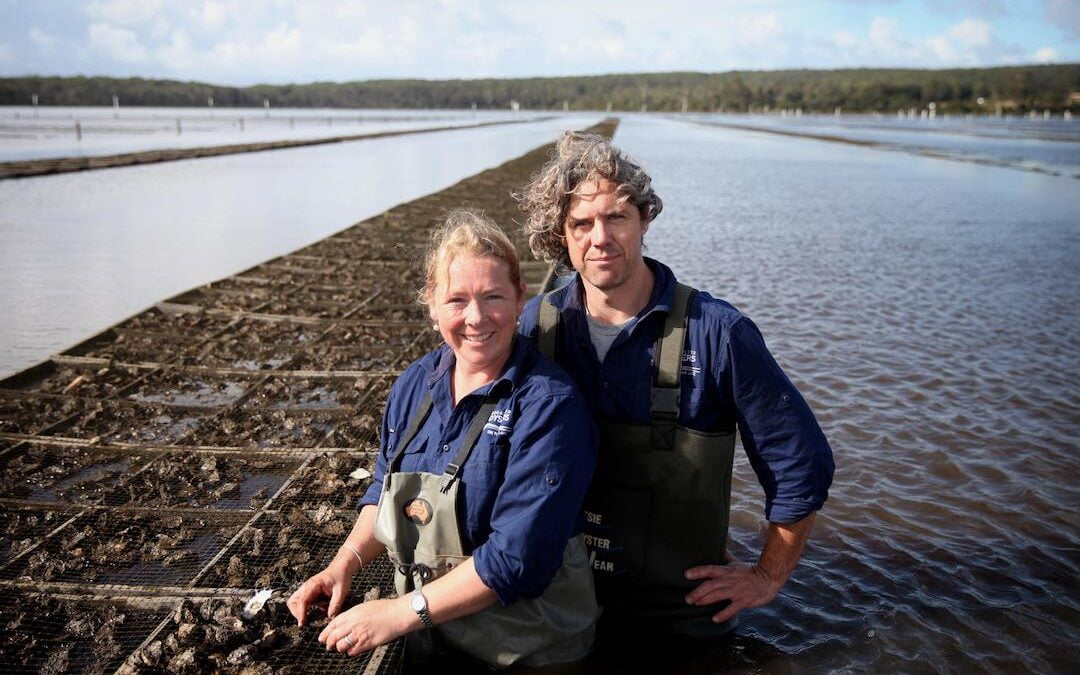OceanFarmr has just launched a program called Farm to Buy, an alternative to farming finance that will transform the aquaculture industry. It allows aquafarms easy access to capital for water-based farmland.
Ewan McAsh is a game-changer. A marine biologist turned oyster farmer, Ewan founded the farm management app Oceanfarmr (previously SmartOysters) in 2017, which turned the regenerative aquaculture industry on its head.
Oceanfarmr allowed oyster farmers to accurately record the everyday activity of their farm using GPS-enabled technology, rather than just relying on their own memory, skill, experience and sheer grit.
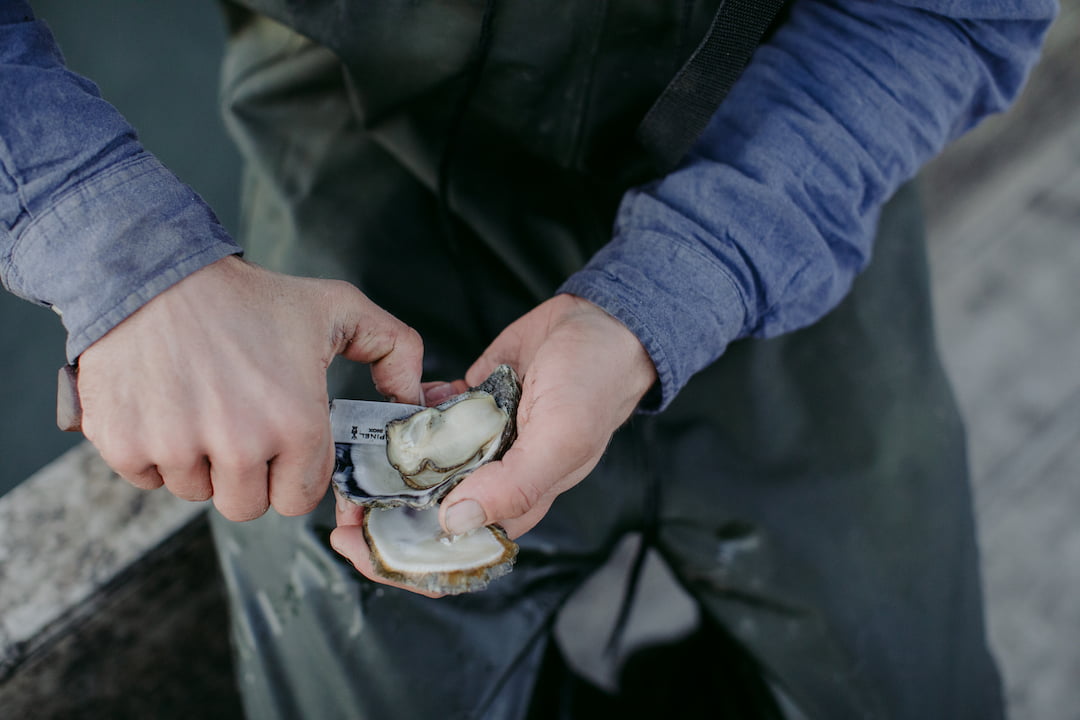
One of the other biggest challenges farmers face is finance. Farm to Buy hopes to provide a solution to this challenge. Image: Oceanfarmr.
Now, following the success of Oceanfarmr, Ewan is back at it again with Farm to Buy, a program which aims to continue supporting farmers and the expansion of Australia’s aquaculture industry.
Oyster farmers face a lot of different and difficult challenges in their work: waves, wind, tides, disease and climate change are just some. However, one of the other biggest hurdles that farmers face is finance. Farm to Buy hopes to provide a solution to this challenge.
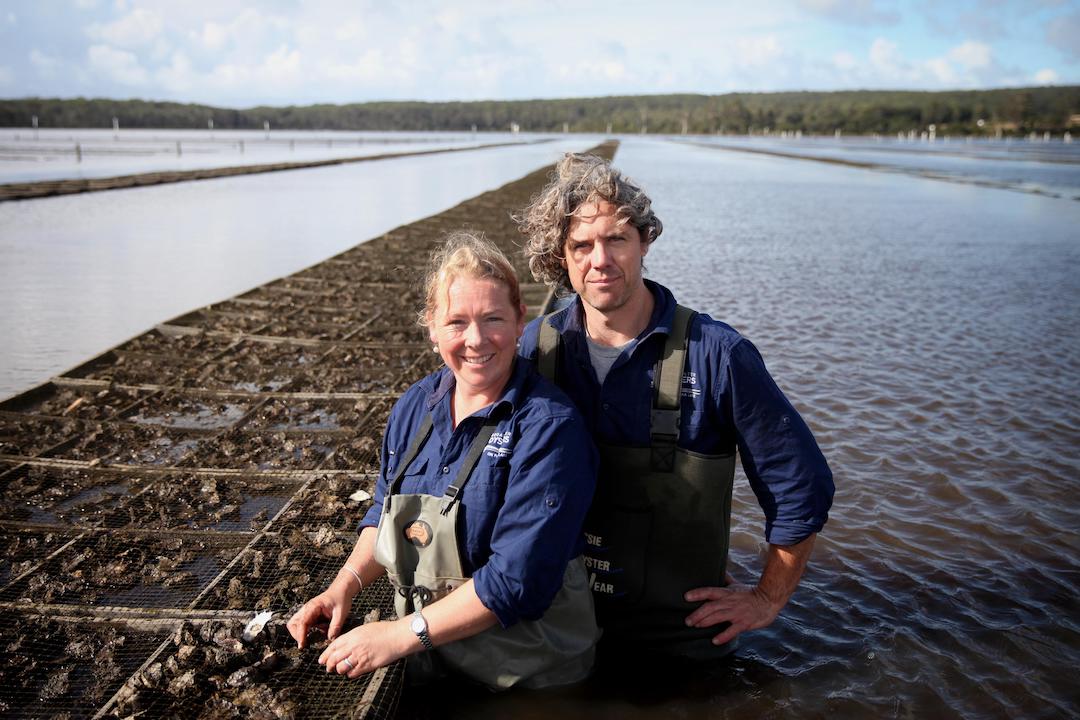
Sue and Greg McIntyre, Pambula. Imaghe: Oceanfarmr.
Overview of the oyster industry
The oyster industry is worth US$150-$300 billion globally – and growing. As Ewan says, “Over the last ten years we have seen an increased appreciation and awareness of the health benefits of eating seafood as well as the environmental benefits of ocean farming of oysters, mussels, and seaweed. Demand and prices have significantly increased but growing conditions have become more challenging. The end result is that farmers have had to rapidly change cultivation methods, adopting new technology and growing methods to meet the market.”
Oceanfarmr’s Farm to Buy program has been designed with this in mind. As the only company dedicated to the ocean farming sectors of oysters, mussels and seaweed, Oceanfarmr is in a unique position to finance the growth of the sustainable ocean farming industry.
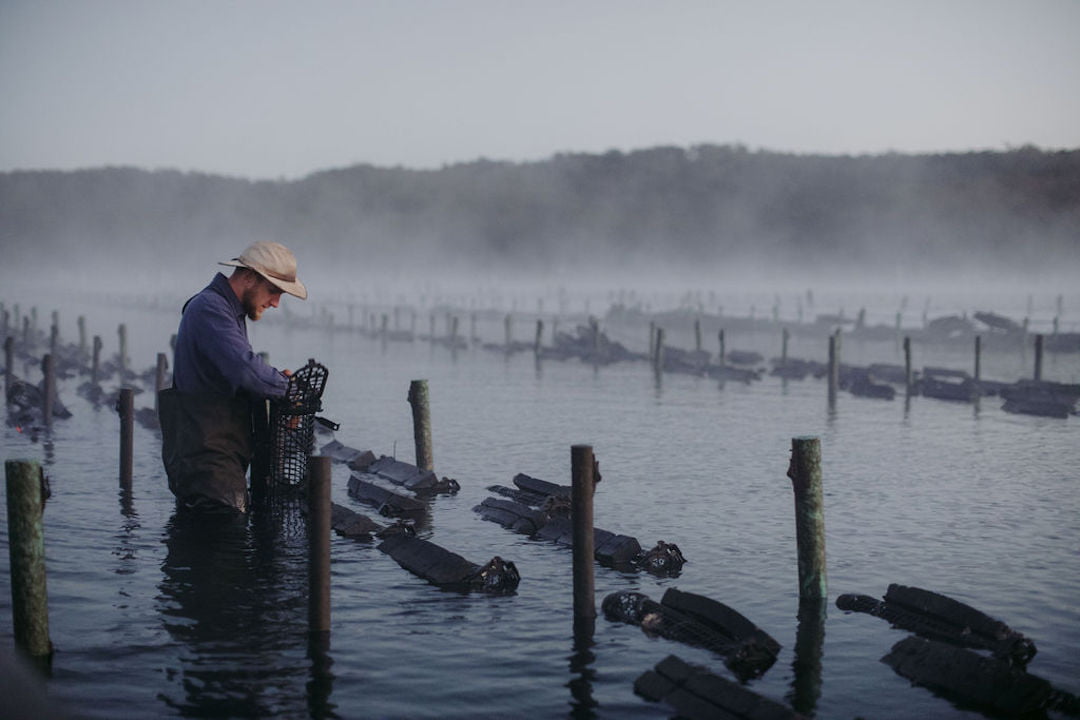
The Farm to Buy program will enable farmers to expand their production by providing initial crops and infrastructure. Image: Oceanfarmr.
How does Farm to Buy work?
While land-based agricultural farms often have the option of land as an asset to secure financing, aquaculture farmers have traditionally found it more difficult to access capital as water-based farms are not privately owned.
The Farm to Buy program is enabling farmers to expand their production by providing initial crops and infrastructure. For example, the oyster farmer will receive a crop that can be grown over a 12-month cycle as well as the infrastructure to grow it (oyster baskets). The farmer makes no upfront or no ongoing payments. They then farm the crop for the 12-month cycle, and when it is harvested and sold, the farmer will use the funds to pay out the finance. The farmer will then have ownership over the new baskets and farming system outright.
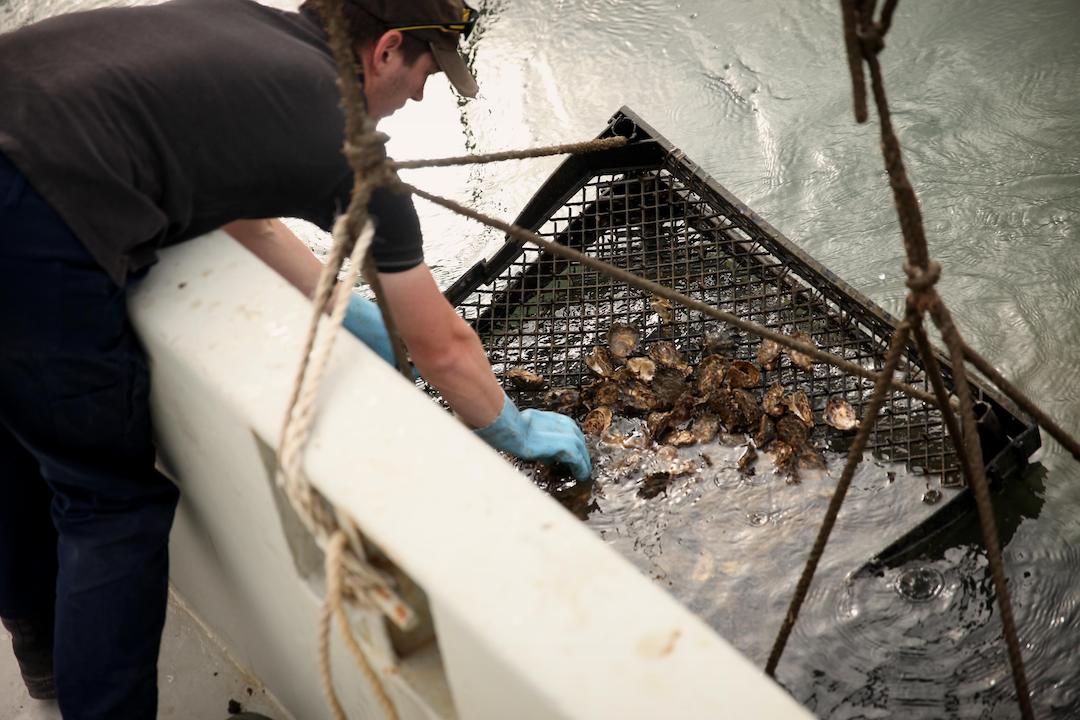
Oyster farmer in Eaglehawk Neck, Tasmania. Image: Oceanfarmr.
Not only does this alternative allow farmers to expand their production, it also eliminates the fear of debt from traditional financing options.
As Ewan says, “Farm to Buy is tailored specifically for ocean farmers. It’s not finance in the traditional sense, more an innovative combination of crop financing, share farming and asset management. [It] enables farmers to leverage their expertise and farm data to fund new gear and grow their farm’s production. It does not require security. It does not require monthly cash repayments. Instead, it enables farmers to invest in the newest most robust farming technology.”
To access Farm to Buy, the farmer must be an existing farmer and Oceanfarmr subscriber, with at least three months of farm data tracked with Oceanfarmr.
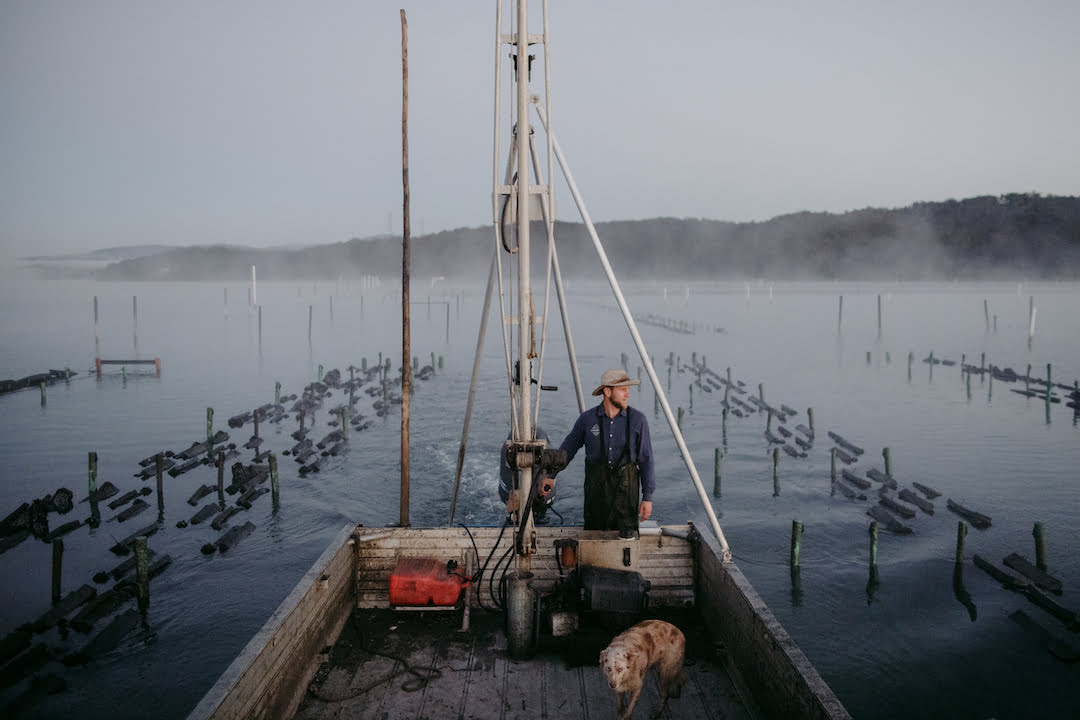
The Oceanfarmr team then work closely with the farmer to provide insights on their business and infrastructure. Image: Oceanfarmr.
What will it achieve?
This farm data is an important aspect of the program. Oceanfarmr constantly captures hundreds of data points over time across crops, assets and activities. The Oceanfarmr team then work closely with the farmer to provide insights on their business and infrastructure.
The Farm to Buy program uses that data to show that these farmers have better farm practices, efficiency and scalability, to maximise crop value and de-risk the farm.
Oceanfarmr has shown that shellfish and seaweed farmers that most actively use the Oceanfarmr app can typically manage more stock, have lower mortality rates and are frequently more profitable. Not only that, but finance providers can also benefit by using Oceanfarmr to more effectively measure the risks associated with aquaculture farming.
The importance of sustainable aquaculture for the environment can also not be overstated. As Ewan notes, “Sustainable aquaculture needsno inputs so uses little to no natural resources. It draws nutrients out of the ocean currents thus improving water quality. The farms provide habitat and shelter for other sea animals. The world has a growing need for healthy proteins which shellfish provides, without damaging the environment.”
As climate change has a wider effect on ocean life and landscapes, the technology will also allow farmers to increase the quality and quantity of their yields. Ewan is looking forward to the changes this will bring to the industry. “This means more sustainable quality seafood can be grown, more jobs for local regional areas for both young and old farmers and staff, and more opportunities for young farmers to come into the industry.”
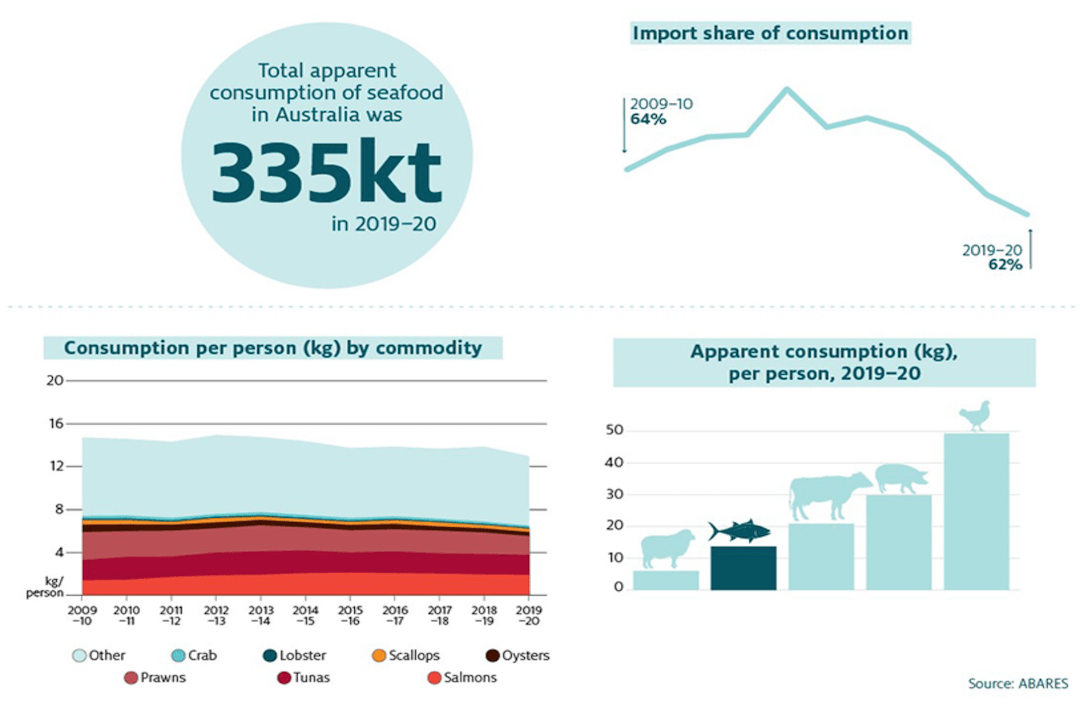
Australian seafood industry infographic showing data on consumption. Image: Oceanfarmr.
What’s next for Oceanfarmr?
Ewan was blown away by the initial response to Farm To Buy. “We had a huge response to the Farm to Buy with now more than $60 million in farm finance enquiries. So, our focus at Oceanfarmr is getting farmers set up to take advantage of this new program with mussel and seaweed farms to be added next.”
They have just had a massive investment from Katapult VC which will be used to accelerate and expand the Farm to Buy program, allowing more farmers to access much needed resources to grow their farms sustainably.
To find out more about the Farm to Buy offering, visit oceanfarmr.com.
Want to learn more about Australia’s oyster industry? Read about the Sydney Rock Oysters under threat and the farmers fighting for their survival.

